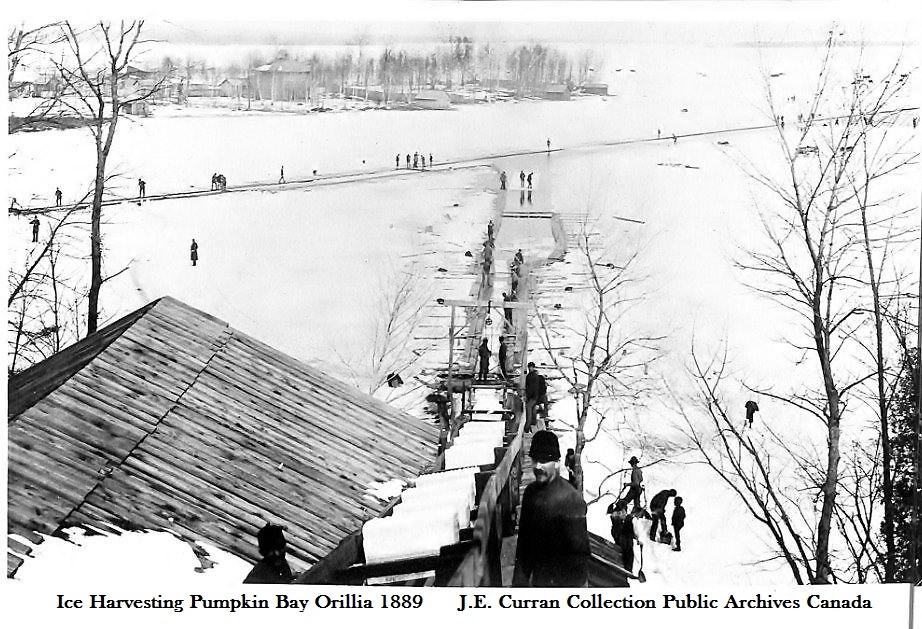Postcard Memories is a weekly series of historic postcard views and photos submitted by Marcel Rousseau. Some were previously published by the Orillia Museum of Art and History and in the book Postcard Memories Orillia. You can take a trip down memory lane with us each Saturday morning!
Starting in the 1880s, the Buffalo Ice Co. played an important part in the development of Orillia’s ice harvesting industry.
In 1890, the company boasted they owned a storage building in Orillia 600 feet long, 150 feet wide and 24 feet high. It was located on the G.T.R. siding on Moose Beach, east of the Stephen Leacock property.
At that time, Moose Beach was called Buffalo Bay. There were several periods of warming in the late 1800s and early 1900s and many American firms moved north to fill the demand for ice. They harvested thousand of tons of ice from Barrie and Orillia to ship by rail to New York and Ohio.
Several firms located in Orillia during the winter of 1880. Among them was the Chatangua Lake Ice. Co. with a building near Cedar Island. In addition, The Dominion Ice Co. was located just north of the Midland Train Station at the bottom of Mississaga Street.
Near Couchiching Beach Park were large storage buildings owned by Mr. Jack of Newcastle and the Walton Co. of Hamilton who shipped ice to Hamilton, Buffalo and Connecticut.
J. J. Hatley, a local grocer and butcher on the main street, also had a storage building near the park. Hatley had formed a company as early as 1880 with Orillian’s Kean, Perry, Alport and Cameron. They harvested ice from Pumpkin Bay, east of Cedar Island, for the local market as well as shipping by rail to other southern communities.
The scarce postcard titled the Buffalo Ice Co. is postmarked Orillia, March 28, 1906. The building shown was owned by Webster & Markham of Buffalo NY.
Located near Moose Beach, the nearly completed building was 240 feet long, 100 feet wide and 52 feet high. A conveyor on the west side of the ice house runs a considerable distance into the lake.
An electric motor at the top of the 50-foot tower runs an endless chain with slats to carry the ice. The 400-pound blocks are directed down a chute into the storage rooms. Men were employed one day at a time and paid around $1.25 nightly. This huge storage building was demolished several years later when weather conditions changed.
The Sarjeant Fuel Co. in Orillia started cutting ice on Pumpkin Bay in 1903. They leased a storage building from the Tait-Carss Lumber Co. at the foot of Elgin St. In the 1920s.
A. H. Oliver Machinery in Orillia developed a power-operated circular saw for ice cutting.
Used by the Sarjeant Company it was also sold across Canada and the U.S. By this time Sarjeant was using a truck to haul ice to a new ice storage shed built on Western Avenue.
In 1947 Sarjeant had installed an artificial ice-making machine that could produce 12 tons of ice a day. They also had a drive-through vending machine that would take a couple of quarters to release a 25 pound block of ice down a chute and through a small burlap covered door for pickup.
On March 15, 1906, The Orillia Times described Orillia’s newest industry that employed more than 150 men and boys during the previous six weeks.
But, by the mid 1960s, almost everyone had electric refrigeration and the block ice age disappeared like melting snow.
